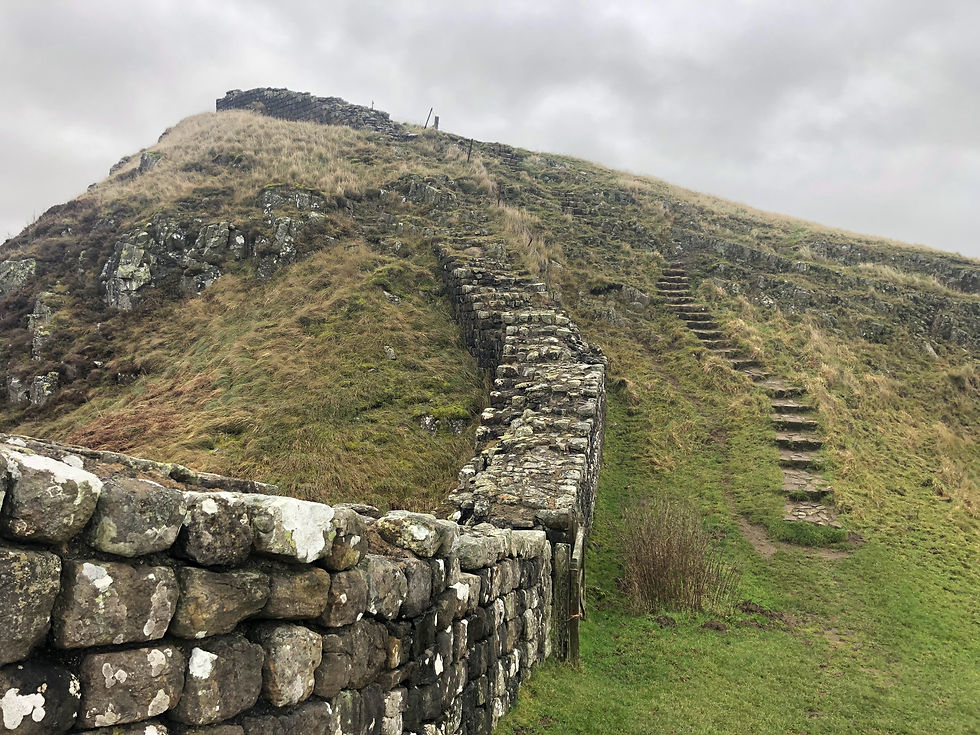Hadrian's Wall: A Testament to Ancient Engineering Ingenuity
- info7894767
- Aug 14, 2023
- 2 min read
The Roman Wall, also known as Hadrian's Wall, stretches across the northern border of England and is an architectural masterpiece reflecting the engineering prowess of the ancient Romans. Built under the direction of Emperor Hadrian between 122 and 128 AD, this formidable defensive structure bears witness to the Roman Empire's might and ambition. This article delves into the historical significance, construction techniques, and lasting impact of the Roman Wall.

Hadrian's Wall was constructed during a turbulent period in Roman history. It not only served as a defensive barrier but also symbolized the empire's intent to firmly establish and protect their territorial boundaries. Stretching for approximately 73 miles (117 km), it marked the northernmost frontier of the Roman Empire, separating Roman Britain from the unconquered lands beyond. This colossal construction became an iconic symbol of Roman power, administration, and control.
The Romans employed ingenious construction techniques that allowed them to build this extraordinary wall. Made primarily of limestone and turf, the structure boasted a foundation of large stones fitted expertly without the use of mortar. The main wall measured between 10 and 20 feet in height, with a width of approximately 8 to 10 feet.
In addition to the main wall, Hadrian's Wall was fortified with a series of forts, milecastles, turrets, and barracks, providing accommodation and storage facilities for soldiers stationed along the wall. The meticulous planning and engineering required for such an extensive and well-coordinated defensive network is a testament to Roman military organization and strategic vision.
While the Roman Wall was initially built for defensive purposes, it had other significant effects. The most apparent influence was on the local communities and economies that sprang up along the wall. These settlements, known as "Walltowns," fostered trade, commerce, and cultural exchange between the Romans and indigenous populations. The inhabitants of these towns developed new skills, traded goods, and learned Roman customs and technologies.
Additionally, the construction of the Roman Wall had a profound impact on both Roman and British history. The wall served as a physical barrier that controlled access and movement between the Roman Empire and the unconquered lands beyond. It regulated the movement of people, goods, and ideas, exerting authority and shaping the region's cultural and political landscape for centuries.
Despite its age and the ravages of time, significant sections of the Roman Wall have survived and can still be visited today. The wall's popularity as a tourist destination has been both a boon and challenge for conservation efforts. Numerous preservation projects have been undertaken to safeguard the remaining sections, allowing visitors to witness firsthand the remarkable engineering abilities of the Romans and immerse themselves in the rich history of the region.
Hadrian's Wall stands as an everlasting testament to the Roman Empire's engineering ingenuity and their control over far-flung territories. This awe-inspiring structure served as a physical demonstration of Roman military might while shaping the social, economic, and cultural dynamics of the region for centuries. The Roman Wall is not merely a relic of the past; it is a living monument that continues to captivate visitors, evoking a sense of wonder and curiosity about the ancient world and its lasting legacy.




Comments